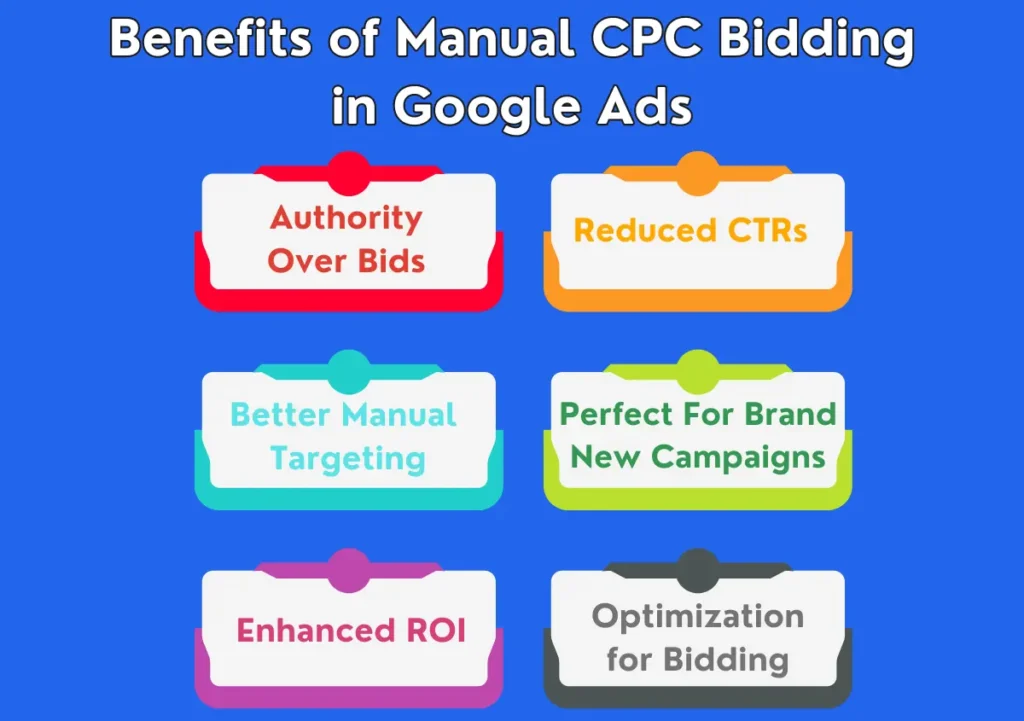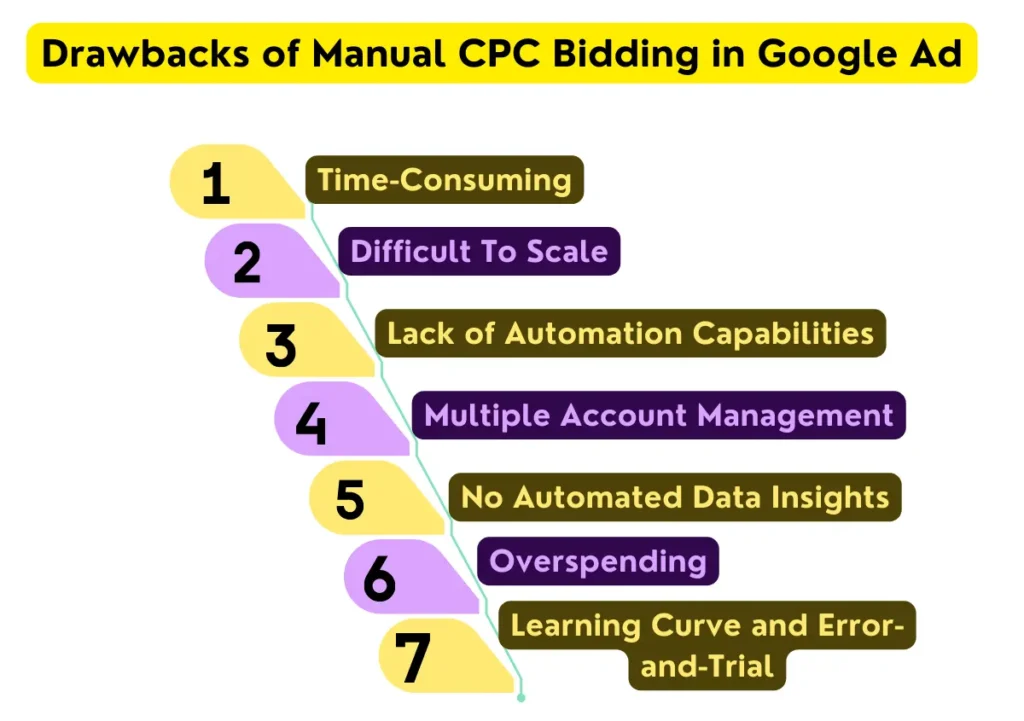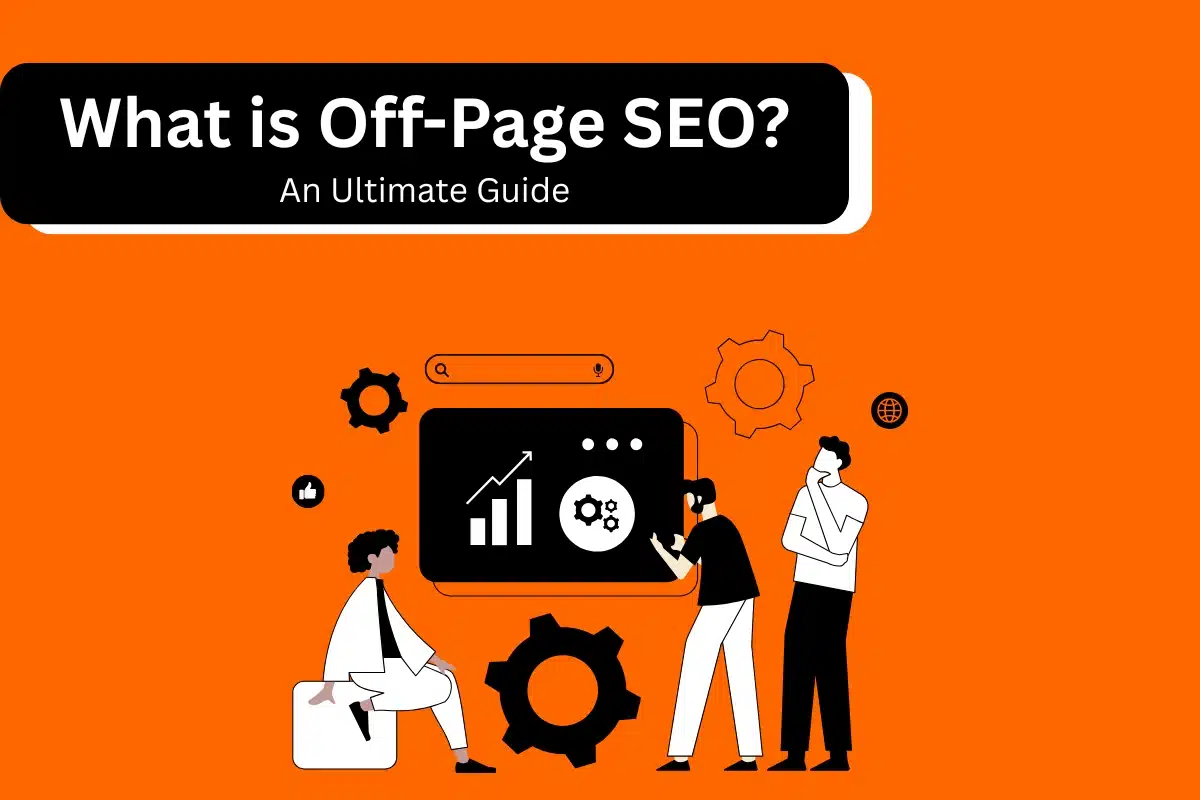Advertisers are divided on whether to use automatic bid tactics in Google Ads or manual CPC methods for click-through pricing.
And given Google’s involvement in “educating” marketers, this is hardly surprising.
Google claims that because automatic bidding “takes much of the heavy lifting and guesswork out of setting bids to meet your performance goals,” it is preferable to manual CPC bidding.
However, in practice, it means handing over management of ad spending to Google’s algorithms, which may result in excessive click-through rates and a lack of bid knowledge.
Although this might save you time, you give Google complete control over how much money you spend on ads, frequently leading to overspending on clicks and a lack of bid intelligence.
With Manual CPC, you can accomplish that, and in this post, I’ll explain how.
Now let’s get started!
Understanding What a Manual CPC is
The most popular Google Ads bid approach is Manual CPC.
Manual Cost-Per-Click, or manual CPC as the name implies, gives you complete control over modifying and setting your bids at the ad group or keyword level.
Your bid, which is typically lower than the amount you are paid when people actually click on your advertisements, represents the highest amount you are willing to spend for each click.
Google claims that the maximum amount you pay for clicks is necessary to beat the rival behind you and reach ad rank thresholds.
Only when you configure bid alterations for your campaigns that enable you to exceed your limit CPC will you be responsible for paying greater expenses than that amount.
In addition, you can set maximum bids for Search Network and Display Network campaigns using Manual CPC bidding. This bidding strategy offers great value because you only pay when a person is interested enough to click on your ad and learn more.
Consider billboards: Whether or not people see the ad in reality, advertisers pay for the potential number of people who may view it while driving past it.
Online ads: You only have to pay for Google’s “billboard space” with CPC bidding for Ads when you can be certain that people noticed your ad and were inspired enough to click on it. For instance, if 50 people saw your ad but only 10 clicked on it, then you pay for only the 10 ads clicked on, not the 50 ads seen.
When is a Manual CPC Useful?
When you are first starting and have little or no access to data, manual CPC is the best option.
If you are unsure of what CPC to employ to gauge the effect of any modifications to your bid, you can utilize Manual CPC.
Although it may take a lot of time, manually adjusting your bids will offer you greater control over what you bid on and how much you spend.
For this reason, many marketers like this bid technique over automated ones that rely on Google’s algorithms.
With Manual CPC, you have more alternatives to maximize your bids even if you aren’t privy to the data points that Google utilizes for automatic bidding.
In contrast to automatic tactics, manual bids allow you to manually modify your CPC thresholds to restore lost impression share or enhance the position of your advertising on the page.
In essence, Manual CPC functions best when:
- The goal of the campaign is to get the most clicks or ad impressions possible.
- You wish to share your impressions of the domain search using the top-performing keywords.
- Your budget is tight and little.
- Maintaining a specific ad position—typically in the top ranks—is your goal.
Google Ads Manual CPC: Benefits and Drawbacks
As a digital marketer, you want to get the most out of your Google AdWords ads. One of the most important choices you will have to make is selecting the appropriate bidding strategy. Your bidding techniques determine the amount you pay for each click on your adverts. Although Google Ads provides various bidding options, manual CPC bidding is one of the most widely used. This tutorial will discuss the benefits and drawbacks of manual CPC bidding for your Google Ads campaigns.
Benefits of Manual CPC Bidding in Google AdWords Campaigns

1. Authority Over Bids
Using CPC bidding, you can completely control your bids. You can have a separate bid for every term, ad group, or campaign. With this level of control, you can adjust your bids based on campaign performance and get the most from your budget. Thus, it is ideal for new campaigns that lack conversion.
2. Better Manual Targeting
Manual CPC bidding allows you to target keywords, sentences, or campaigns better. Adjust your bid based on keyword or group performance to profit from your ad strategy.
3. Enhanced ROI
By bidding based on the cost of each click, this strategy helps you achieve a much higher Return On Investment (ROI). That is, you will spend less on clicks that do not benefit your brand.
4. Reduced CTRs
Manual CPC bidding has a competitive edge in identifying lower-performing words and reducing bids on those words. High-performing words will benefit you with quality clicks on a lower budget.
5. Perfect For Brand New Campaigns
Manual CPC bidding is ideal for new campaigns because you can control your bid. Make a budget and distribute it evenly to maximize the campaigns’ results.
6. Optimization for Bidding
CPC manual bidding is ideal for campaign optimization for places lacking adequate conversion. Make an ideal bid for budget management to improve camp at the end performance.
Drawbacks of Manual CPC Bidding in Google AdWords Campaigns

1. Time-Consuming
This process takes a long time, especially when you have a big campaign with many keywords and ad groups. To get better results, you must check your campaign’s performance more frequently and adjust your bids more frequently.
2. Difficult to Scale
Manual CPC bidding is difficult to scale, especially with a huge campaign. It also becomes harder to stick to your bidding strategy as your campaign grows, as you have more keywords and ad groups to manage.
3. Overspending
To avoid overpaying, you must pay more attention to your non-performing keywords and ad groups. Otherwise, you may run out of your budget without achieving your desired results.
4. Lack of Automation Capabilities
Since CPC bidding requires manual bid adjustments, it is less automated than other bidding systems. If you want to automate tasks and save time, this method may not work for you.
5. Multiple Account Management
Although manual CPC bidding is a good strategy for new campaigns, it is inefficient for multiple campaigns. Adjusting each bid manually is time- and resource-consuming when many campaigns are added, resulting in inefficient overheads and poor campaign optimization.
6. No Automated Data Insights
Manual CPC bidding lacks the automated data insight Google’s algorithms provide for automated bid strategies. With only a few data points on hand, the advertiser must monitor the account and adjust each bid manually while competing against other bidders. This results in time-consuming and wasted effort, especially when competing bidders and advertisers continue to adjust their bids.
7. Learning Curve and Error-and-Trial
Another drawback is the long learning curve for optimizing bids. Most advertisers will have to go through a long cycle of trial and error before achieving optimal results through the adjust-assess-optimize method.
Automated Bidding vs. Enhanced CPC vs. Manual CPC
As far as search engines go, everyone knows that Google reigns supreme.
The word “Google” is a verb due to the platform’s widespread usage.
People go to Google when they need some information or reviews or want to take action. So if you’re a business owner with that something (a product or service, an offering, for example), it makes sense to put all your eggs into this popular search engine basket.
Google Ads, formerly known as Google AdWords, would undoubtedly play a significant role in your marketing strategy.
But ultimately, it all boils down to your approach to bidding.
Let’s see the key differences between Manual CPC, Automated Bidding, and Enhanced CPC in the table below.
Key Differences Between Manual CPC, Automated Bidding, and Enhanced CPC
| Automated Bidding | Enhanced CPC | Manual CPC |
| Google manages bids to get the most clicks for the daily budget set. | It is more of an automated strategy where Google uses historical conversion data to make adjustments to bids as long as they are under a certain cost-per-click. | You can manually set up CPC for each keyword or ad group. |
| You have no control over individual bids since it’s automated. | Uses machine learning with Google data points to make these adjustments based on the likelihood of a conversion occurring. | You have complete control over individual bids. |
| Quick and easy to set up with minimal manual work on your end. | If you enable Enhanced CPC on your account, you can let Google adjust your bids towards more conversion value. | You have the flexibility to allocate a budget based on the performance of the ad. |
| Suitable for beginners or those who do not spend a lot of time on their accounts. | Conversion tracking must be set up to use this efficiently. | It is ideal for experienced advertisers or campaigns that require precise bid management. |
| Google can also use this automated strategy for Shopping and Hotel campaigns. | It allows you to allocate a budget towards ads that are performing very well. This enhances the profitability of the ad campaign. | |
| Google will use the maximum cost-per-clicks you set when adjusting these bids, so you do still have some control over ad spending. | ||
| Might lead to higher prices for clicks if a conversion is likely to happen, but you can also get more conversions than Manual CPC. |
How do You Set Manual CPC in Google Ads?
To set up manual CPC in Google Ads, follow these steps:
1. Create Your Campaign
First, enter your Google Ads account and proceed to the Campaigns section. Now you may either add a new campaign or select an existing one that you would like to adjust to your CPC bidding strategy. This is important because it is the basis for setting your Manual CPC parameters.
2. Set the Manual CPC Bidding Strategy
Find the respective section in the campaign settings, choose Bidding, and then, among the available options, select “Manual CPC.” This way, you are given full authority to determine the highest bid for each click on your ad.
3. Set the Maximum CPC Bids
Now that you have the Manual CPC option selected go ahead and set your maximum CPC bids. Depending on your budget and strategy, you will set them using the “bid” option found in the keywords tab.
4. Monitor and Make Adjustments to your Bids
Campaign bids must be adjusted as often as you check on how your campaigns are performing. It can be the click-through rate and the conversion rates of your ad.
Manual CPC Bidding Best Practices and Tips
- Comprehensive Keyword Research: Performing keyword research before setting the bids will help you search for high-volume, low-competition keywords and meet your campaign’s requirements.
- Ad Group Segmentation: Divide ad groups based on similar keywords to apply more relevant bids to certain groups, improving ad relevancy and campaign performance.
- Regular Review and Bidding: Bid management is not a one-time process. Underperforming keywords should raise their bids, whereas those on the peak should lower their bids.
- Advertisement Variation Testing: Test several different text and display advertisement versions to see which best suits the mood of your selected audience.
- Ad Extensions: Extensions allow you to add extra information or otherwise improve the ad, leading to greater visibility and clickthrough rates.
- Monitor competition: Continuously track the job of the competitor’s ads and their reverse, inspired by ad buy time to remain at peak performances.
- Use Google Ads Analytics: This tool helps you measure performance and discover optimal essential bid areas and marketing campaign development zones.
Advanced Strategies for Manual CPC
Beyond the basics of bid adjustments, Manual CPC also enables a high degree of customization for further campaign optimization. In addition to the day of the week and time of the day, this may include user device, location, gender, age, and audience membership.
For example, based on performance data, you may increase bids at peak hours for your activities or be more aggressive about specific demographics. However, remember that Manual CPC involves a lot of work and an excellent understanding of your audience and keywords. If that seems like too much work and you prefer more automation, Google Ads also offers automatic bidding strategies that you might want to explore after getting comfortable with Manual CPC and accumulating data on your campaign’s performance.
Creating and implementing a successful Manual CPC strategy requires balancing control and optimization. By following the provided steps and practicing the outlined best practices, you can make sure that Manual CPC supports your advertising goals and contributes to the success of your Google Ads campaign.
Final Thoughts
We are not Einsteins. But, if we are certain of anything, it is that manual CPC bidding is effective and worth the time and effort.
Keep doing what you’re doing, and our team of professionals at Website Pandas can assist you in creating a marketing strategy that fits your objectives and budget. Bids, keywords, and everything else in between will be handled by us.
You may then focus on being an amazing business owner.
If you want to try out Manual CPC bidding, contact us today.






